How to create WooCommerce customer notes
WooCommerce offers a default option to add notes to orders, which can be helpful when you want to include specific information related to the order. But what if you’re going to add a note about the customer? In this article, you will learn how to add WooCommerce Customer Notes to your shop and share these notes with your team.
What are WooCommerce customer notes?
WooCommerce customer notes are specific notes that store owners can add for each customer. These notes can be used to keep track of important information about customers, such as order history, customer preferences, shipping instructions, or any other information relevant to the customer’s purchasing behavior. The notes will appear on customer profile pages, allowing store owners to reference vital information and provide personalized customer service quickly.
What are WooCommerce order notes?
WooCommerce order notes are messages added to an order to provide additional information or updates. There are two types: customer created notes, which are visible to the customer and can include details like shipping updates, and private customer notes, which are only visible to store administrators and can be used for internal communication. These notes help keep track of important order details and improve communication between the store and customers. In this article we are going to talk about the private customer notes that are intended for internal use.
What can you do with customer notes?
In many cases, adding a customer note to your WooCommerce plugin can be useful. Here are some of the situations when WooCommerce customer notes can be useful:
- Share critical customer information with your team like order number or custom order status,
- Remember an important order detail about a customer like info to include in the invoice or customer order email
- The shop Manager can notify staff about an upset customer in a private note.
- Reminder to send a discount coupon to a customer.
- Capture knowledge about customer data and WooCommerce customer history.
- Avoid errors from your team.
- Improve customer services.
Thanks to the User Notes feature of User Insights and the WooCommerce module, you can now add and share WooCommerce customer notes with your team. In this article, we will see how to use the customer notes functionality to capture customer-related info and share tips about improving your WooCommerce customer management and organization.
Since Users Insights works with registered WordPress users only, this feature will work only for your WooCommerce customers with a registered WordPress account.
Getting Started
Where can you find the customer notes?
Once you install and activate Users Insights, the first thing to do is open the Users Insights plugin page in your WordPress dashboard and find a customer to whom you’d like to add a customer note. You can do this by browsing through the WooCommerce customer list in the table of Users Insights, or you can use the Users Insights intelligent filters to search for a particular customer.
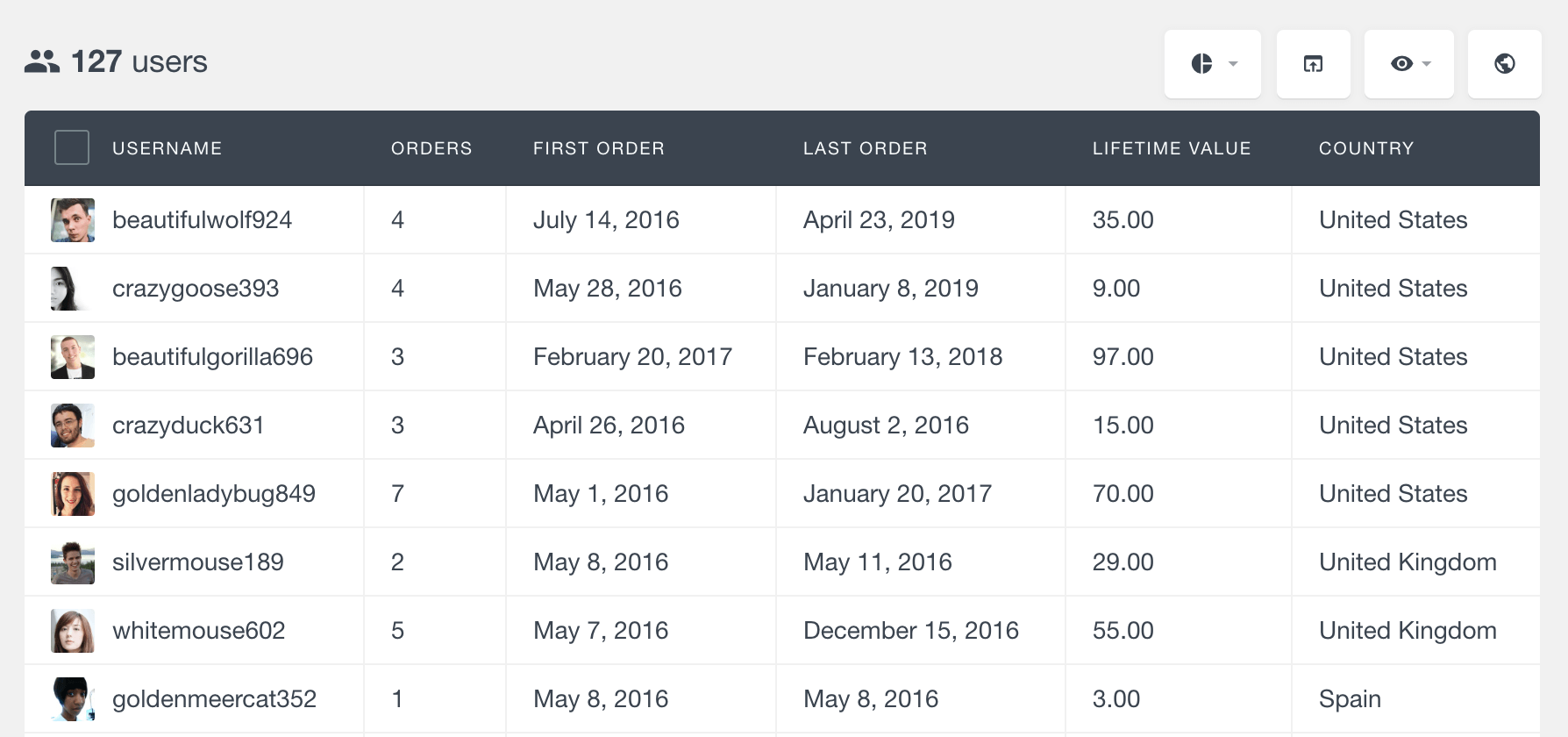
Once you have located your customer from the list, click on the customer’s username. This will open the user profile page of Users Insights. This is a page where you have all the information about a particular customer that Users Insights has detected. This includes the default WordPress user data, WooCommerce billing data (country, city, and region), and the WooCommerce activity (such as orders, reviews, and coupons used).
You will find the User Notes section on the right side of the user profile page. This is where you can see all the notes for the customer and add new ones.
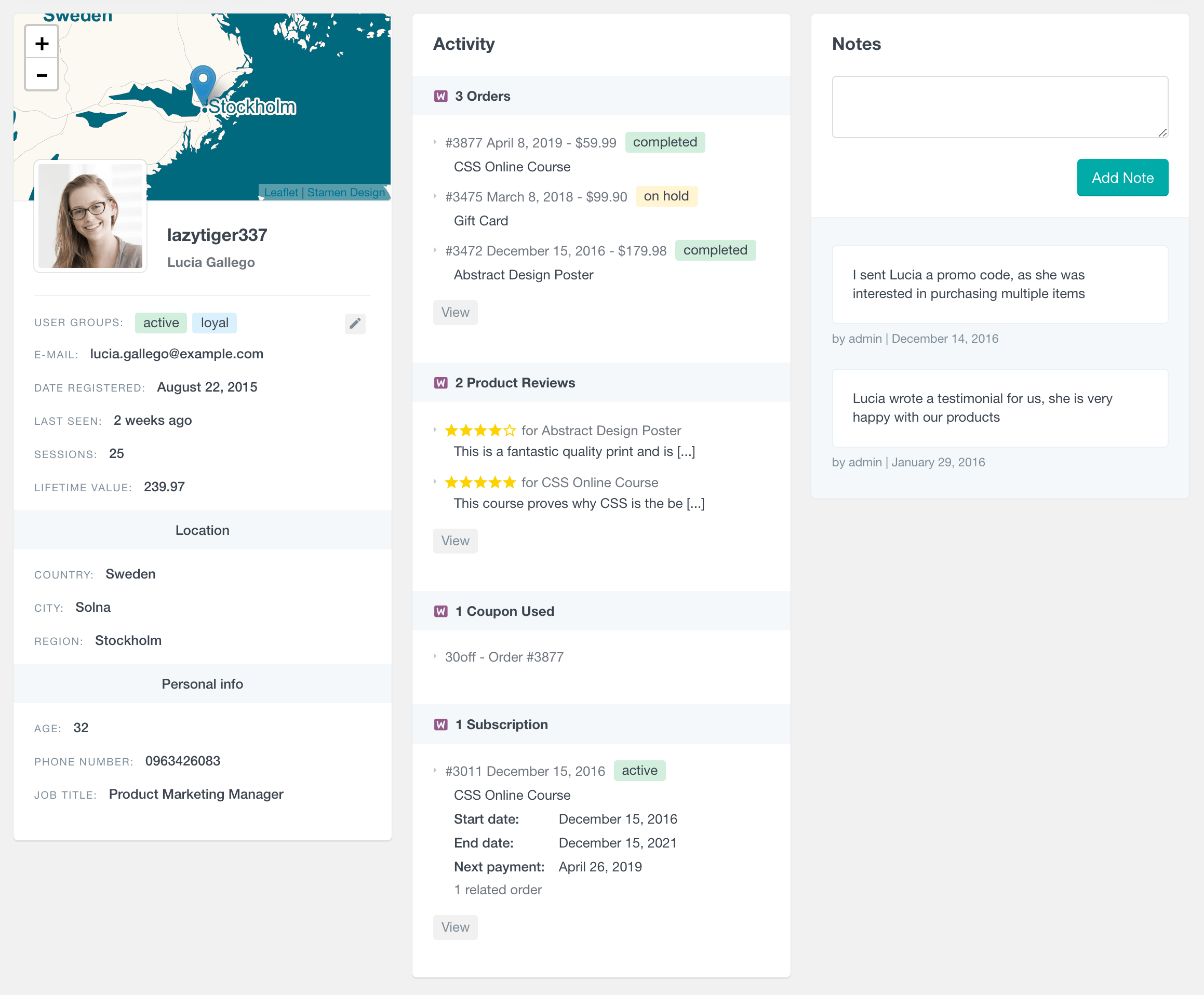
Adding a WooCommerce customer note
For this example, our customer has two existing notes, and we will go ahead and add a new one. Once we write the note in the customer note field and press the “Add Note” button, the new note will be added to the list of customer notes.
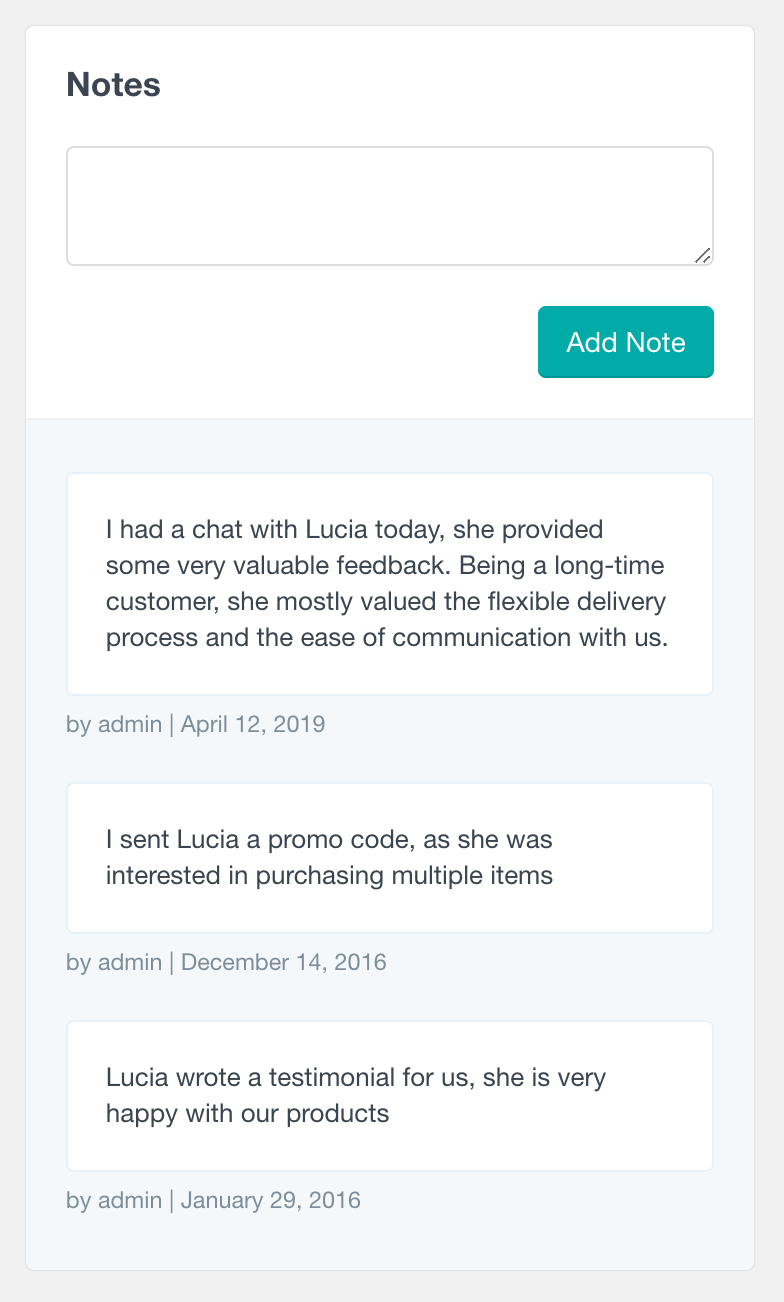
The note will also include some info about its author and the date of its creation. The notes will be ordered chronologically, with the newest notes on top. Each of the notes can also be deleted in case it is not relevant anymore. All customer notes are private, meaning they are only available in the WordPress admin dashboard and are intended to be used for internal communication with your team members. They can be notes about shipping specifics, notes about details about the product that the customer has ordered, or sharing some specific information about the particular customer like customer feedback, known customer preferences, notes about past communication with the customer, etc.
Is the customer note ever visible to the user?
The customer note is not visible to the user; these are private customer notes and can only be seen by WordPress admins with the appropriate user roles and permissions.
Showing the number of customer notes
The user table of the Users Insights plugin also has a notes column that shows the number of notes every customer has. If you can’t see the “Notes” row in the table, you might need to show it by clicking the “eye” icon.
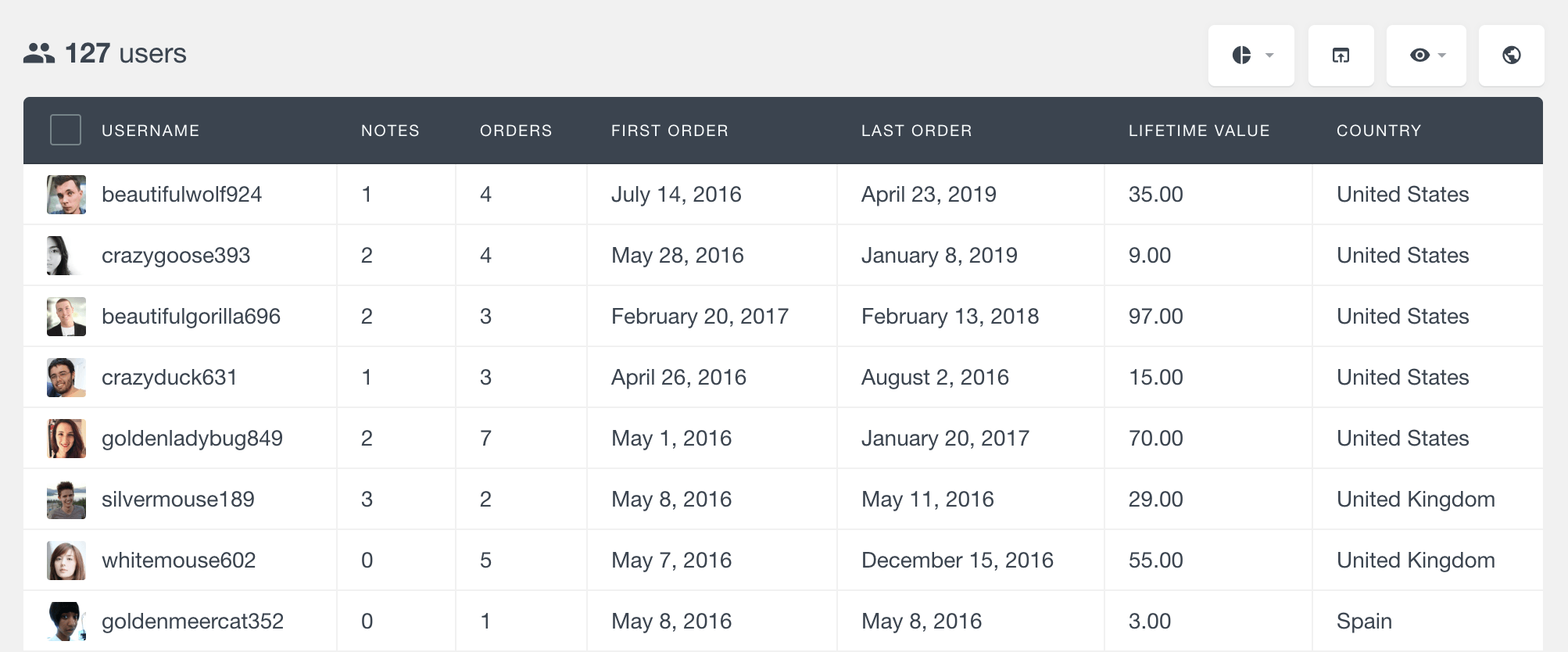
Clicking on the title of the “Notes” column will also sort the user table by the number of customer notes they have. This can be a helpful feature if you want to find all the customers with the most or least notes added.
Filtering your customers by the number of notes
The “Number of Notes” filter allows you to filter your WooCommerce customers by their number of customer notes. By setting the “Notes is greater than 0” filter, you can quickly see which customers have notes attached to their profile:
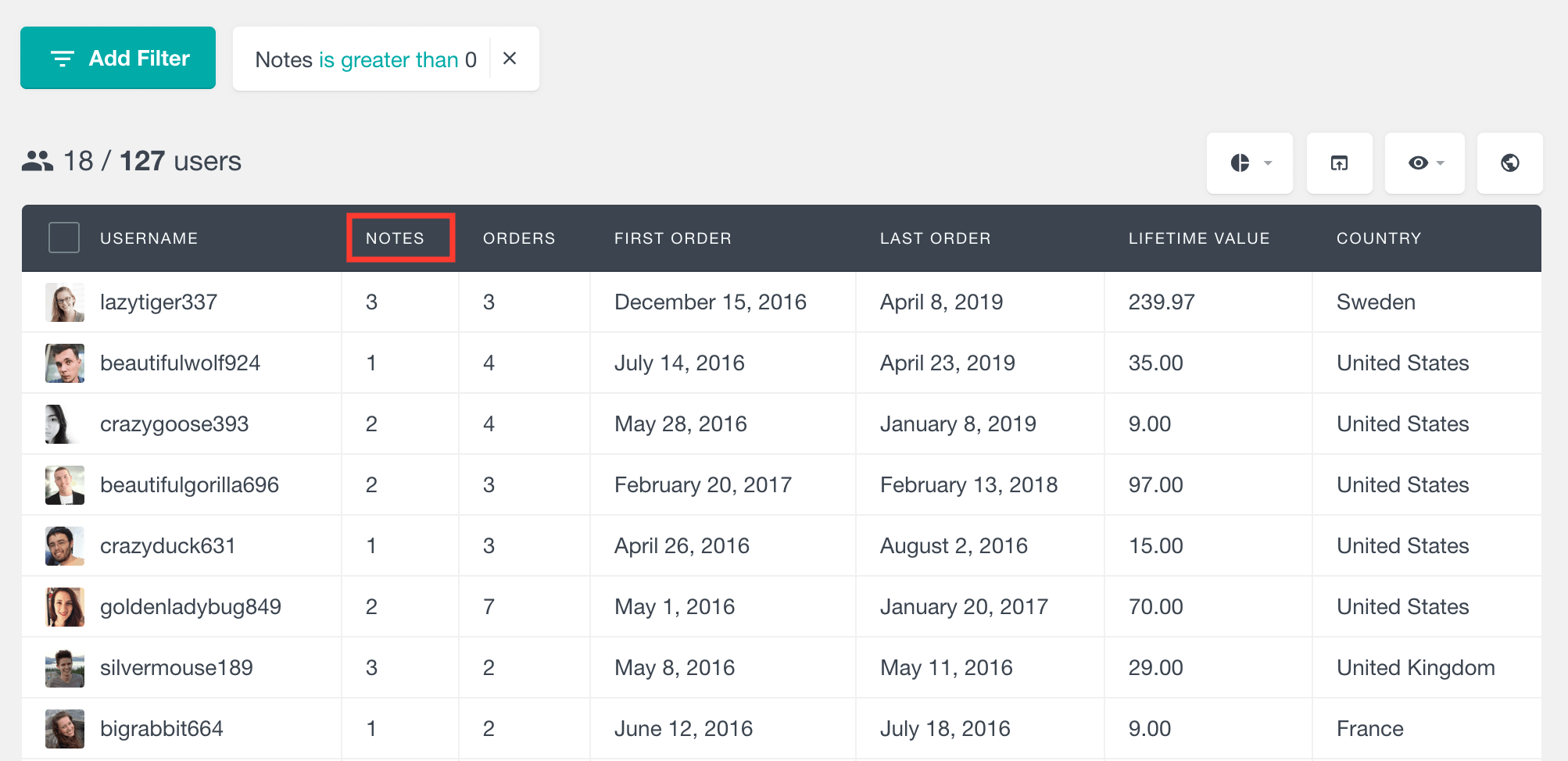
The available options from the number of notes filter are:
- Number of notes is X.
- Number of notes is greater than X.
- Number of notes is less than X.
Here is a short video showing how to use the User Notes feature of Users Insights. In the video, you can see how to add and remove User Notes, as well as how to filter your users by the number of notes:
Showing Only the Most Recent WooCommerce customer notes
The free extension for Users Insights Extended CRM for Users Insights includes an option to show each customer’s date of last note in the user table. This can be a handy feature because it allows you to sort your customers by this field and have an ordered list of your WooCommerce customers with the most recently added notes on the top. This way, you can always know if someone from your team recently added a new customer note.
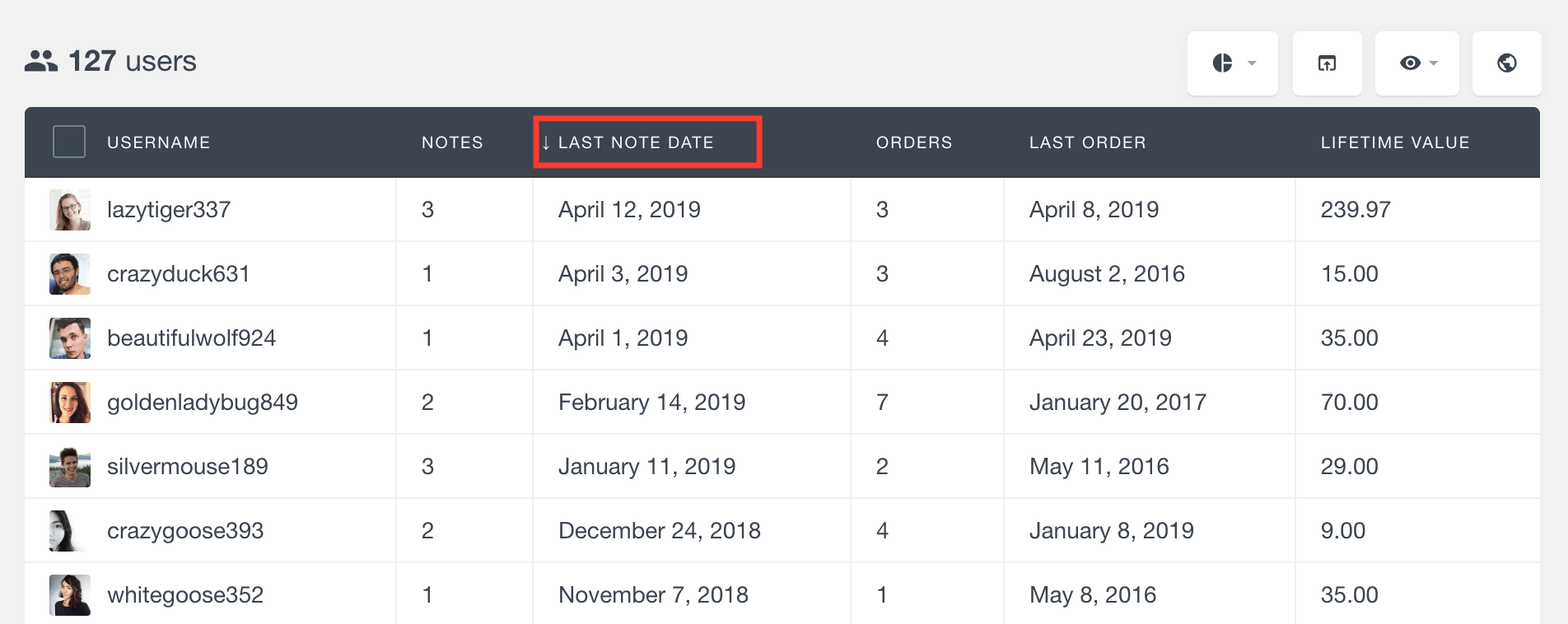
The Last Note Date field is also available in the filters so that you can segment your customers by this field. For example, you can apply a filter like “Last note date is 30 days ago”.
Searching customers by the content of their notes
Another feature that the Extended CRM for Users Insights addon provides is searching users by their note content. It is available as a filter called “Note content”. Additionally, since the Users Insights filters are stackable, you can easily apply additional filters. For example, the following screenshot illustrates finding all customers with a note containing the “feedback” text. We have also added another filter to further reduce the customer list to the ones who have ordered a specific product:
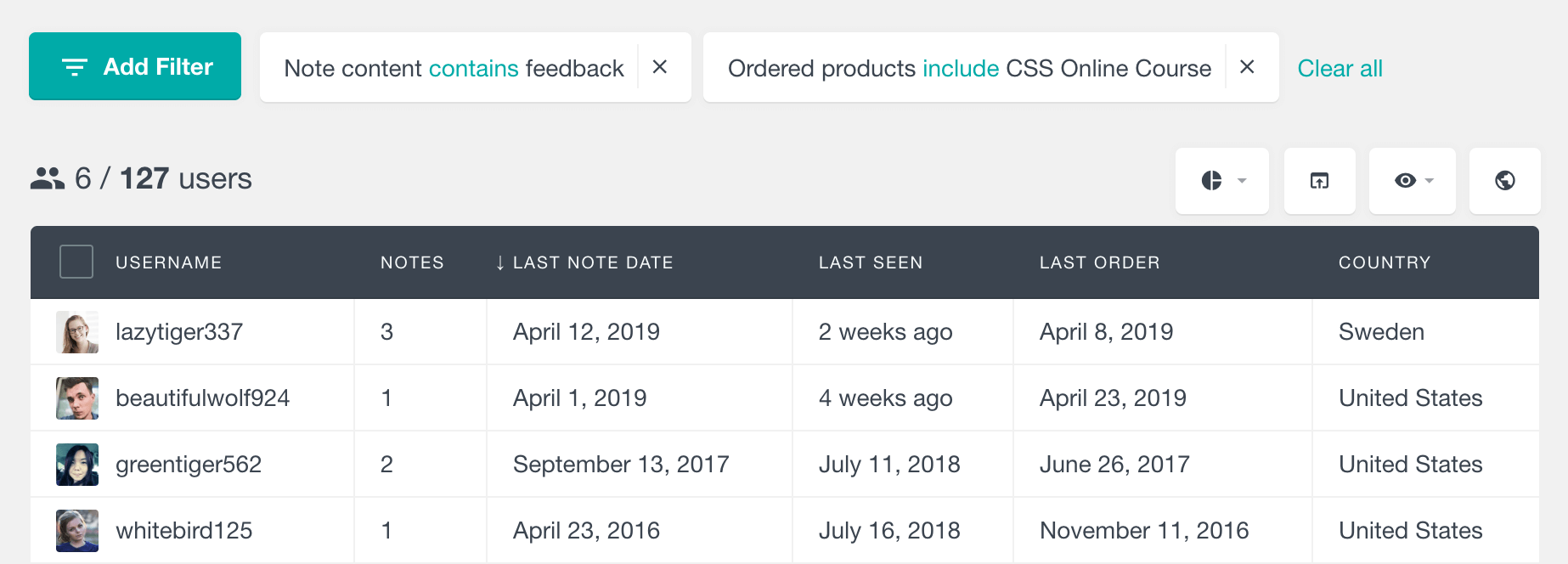
If you run this filter combination often, you can automate the process by creating a customer segment. Segments are a way of having multiple filters applied at once that are automatically updated as the data change, so every time you have a new customer with a feedback note that has ordered that specific product, the customer will be automatically added to the customer list:
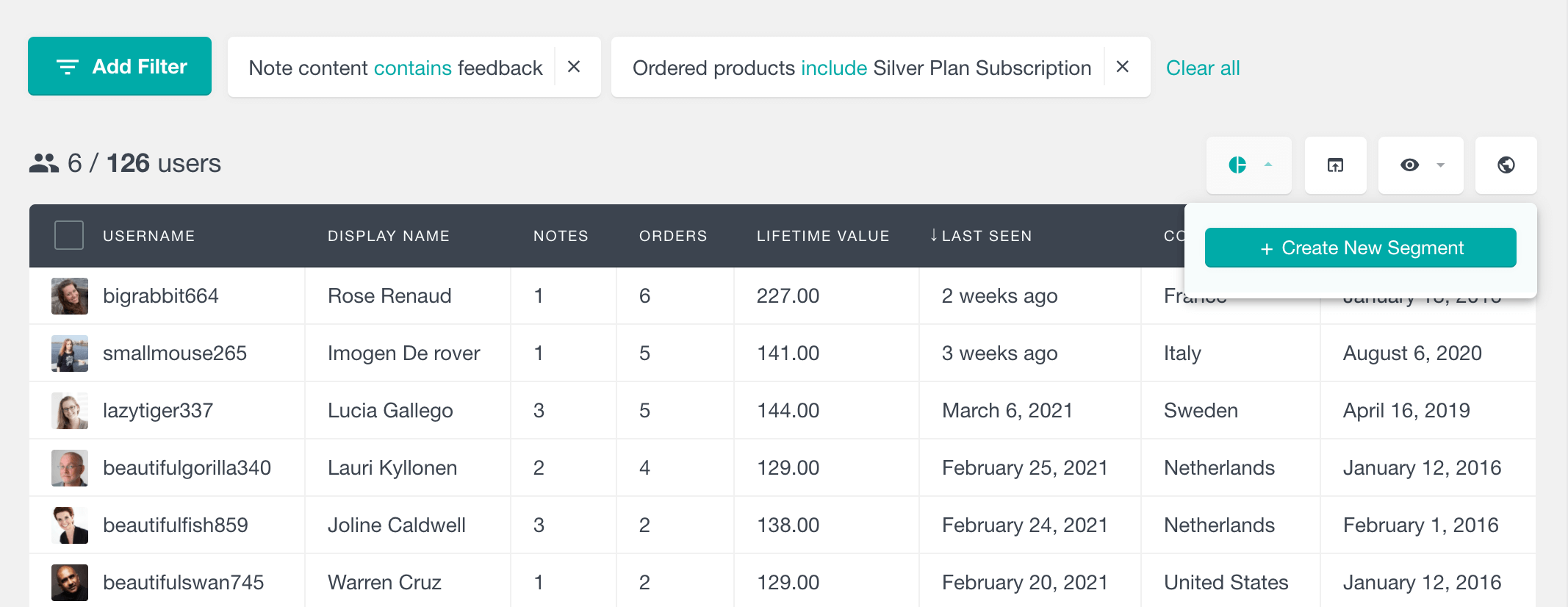
Creating sticky customer notes
The Extended CRM for Users Insights extension also adds the ability to add a sticky note. Making a note sticky will ensure that the particular note always stays on top of the customer notes list.
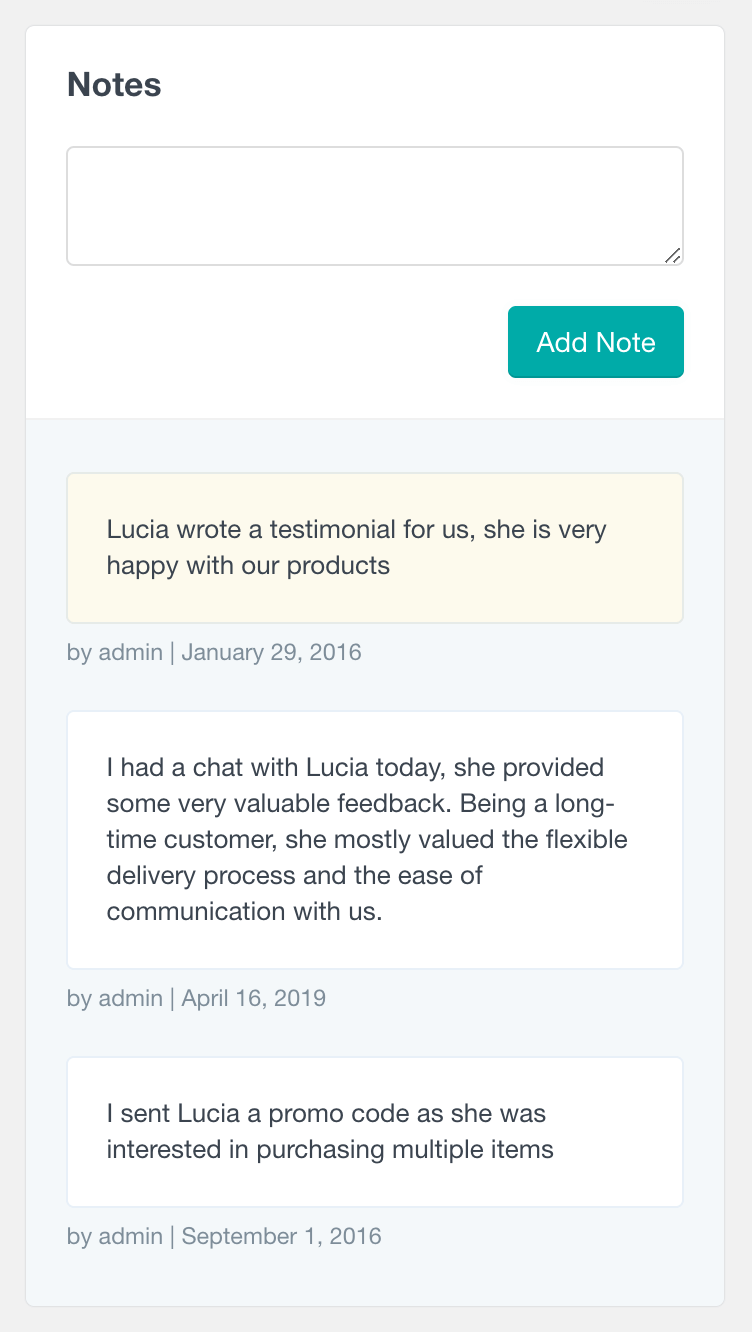
This can be very helpful if you want an essential note to be easily noticed. The sticky notes are in a different color to be further from the regular notes.
Showing WooCommerce Order Notes in the User Profile
WooCommerce itself has a similar feature, the order notes.
What are WooCommerce order notes?
WooCommerce order notes are a communication feature within the WooCommerce plugin that allows store administrators and customers to add comments or notes to an order. These notes serve as a means to convey information, such as order status updates, special instructions, or other relevant details, contributing to better customer service and maintaining a historical record of order interactions.
But the order notes are tied to the orders, as opposed to the customer. The WooCommerce purchase notes are useful for adding order-related information, with the same goals as the user notes.
By default, you can only see this information on the order page, and you can’t see it anywhere else:
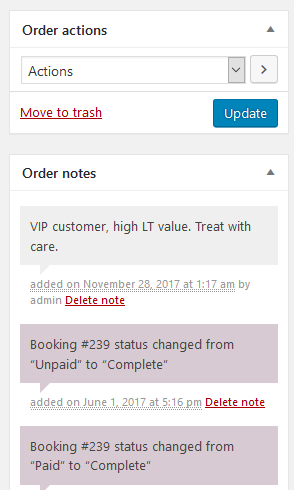
WooCommece order notes vs. WooCommerce customer notes
WooCommerce order notes are comments attached to specific orders, providing a communication channel for store administrators and customers regarding order-related information. On the other hand, Users Insights customer notes are part of the Users Insights plugin, allowing you to add private notes to individual customer profiles, store personalized information about customers beyond their orders, and help you manage and enhance your customer relationships more comprehensively.
How do you add customer notes to orders from WooCommerce?
But it’s possible to add WooCommerce order notes to the Users Insights user profile page. To include these WooCommerce custom notes in the customer profile, you’ll need to use the Extended WooCommerce Customer Management for Users Insights plugin.
With this extension of the notes plugin, you can read all your customer and customer order notes in a single place. This may be handy if you use the order note to communicate with your team.
Here is an example of the WooCommerce notes loaded in your customer’s profile:
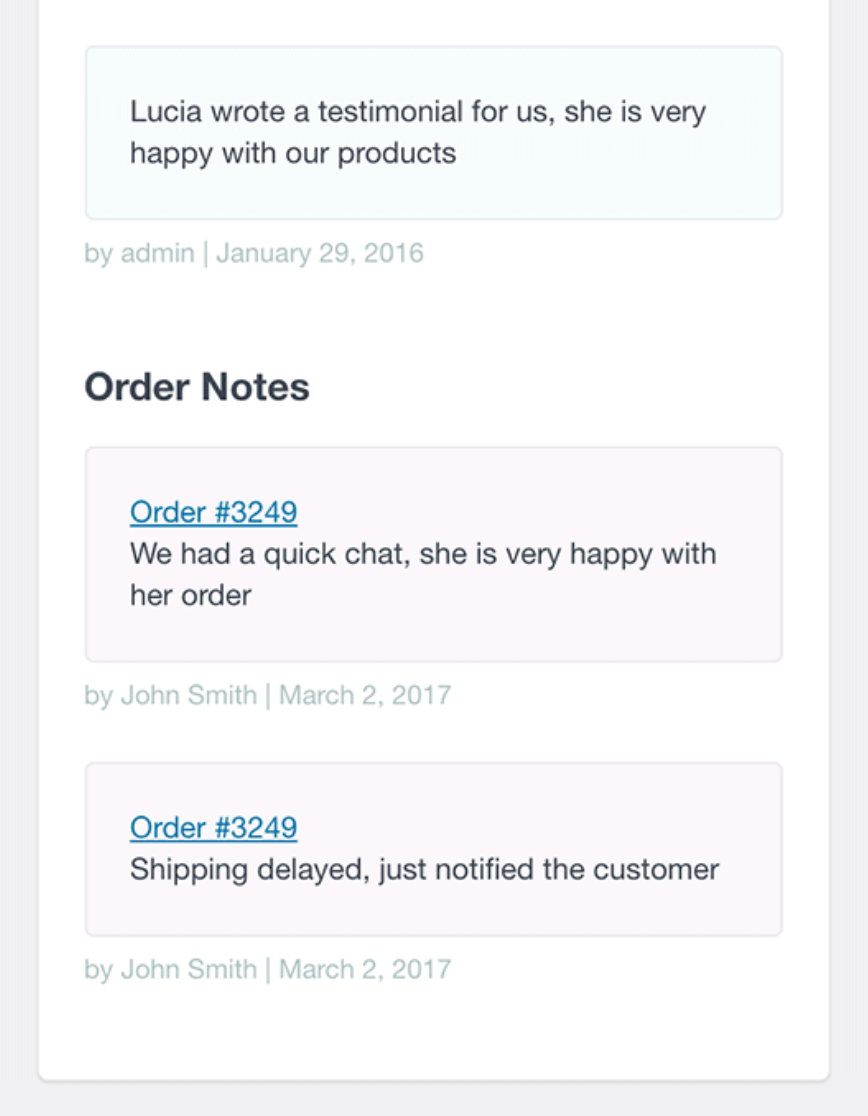
The WooCommerce purchase notes, when viewed in the user profile, can be beneficial for the organization. You can see which orders have issues, which customers have changed their minds over time, or how your team has dealt with difficult situations.
Additionally to the ability to add an order note from the checkout page, WooCommerce also automatically generates notes whenever the order status changes. However, these system-generated notes are not visible within the Users Insights profile. This is to help avoid any confusion from an information overload. If you want, you can manually add a note to the order summary. Not only does this help you keep track of past orders and their turnaround times, but it also allows you to check a customer’s experience with your WooCommerce store quickly.
Using the WooCommerce customer notes for customer tracking is also possible, as you can add the product, order, shipment, and other details. Hence, you can use the user or order notes to create an order history that is easy to follow.
That’s it! Now you know how to use the Users Insights notes feature to capture and share WooCommerce customer notes. We hope this article helped you improve your WooCommerce customer management and organization.
